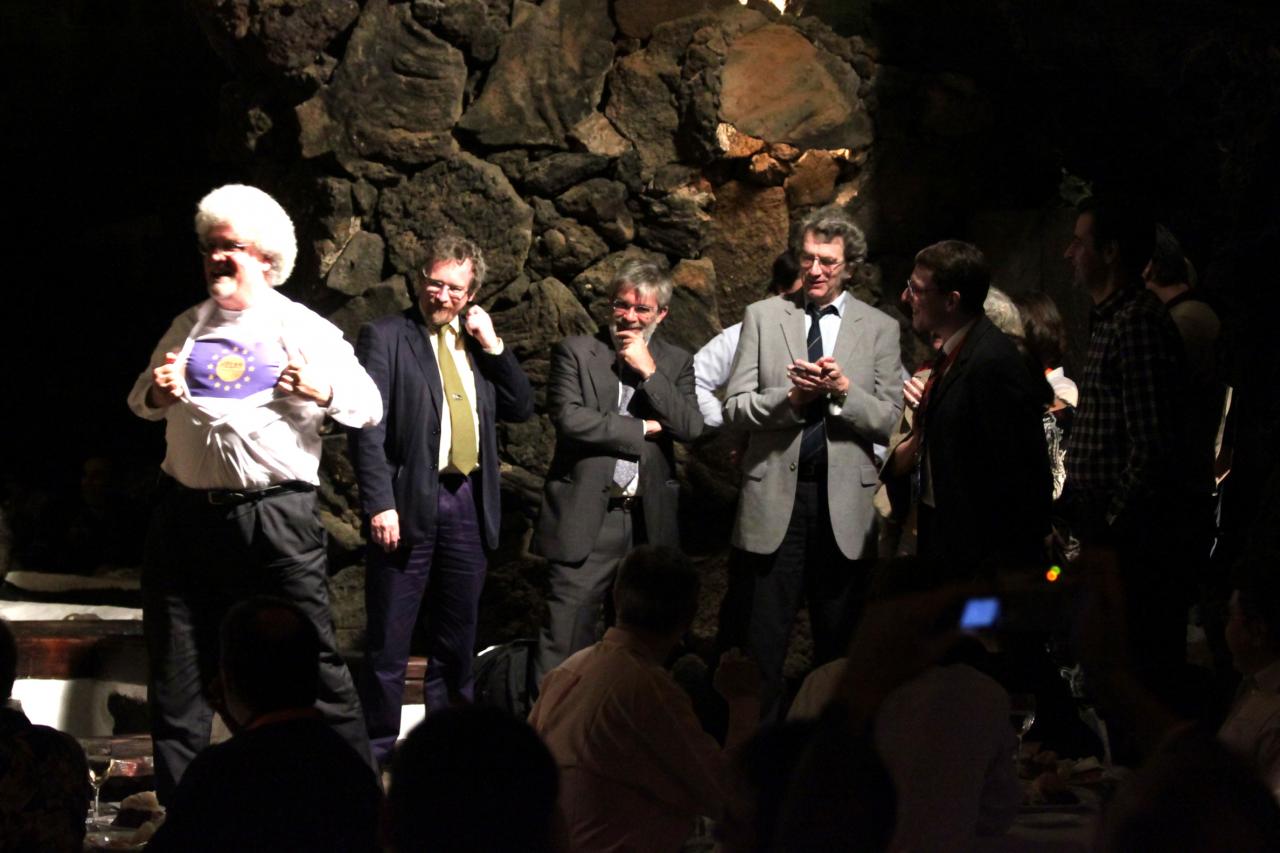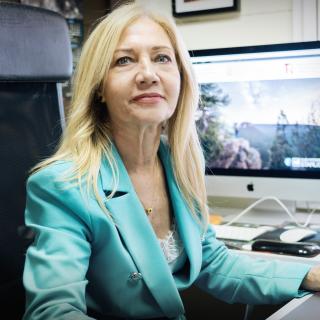Thierry Corbard, of the Côte d'Azur Observatory (France),
When will we understand the Sun's core?
To understand the Sun's core we need to identify gravity modes that have not yet been fully detected. Although we can guess at the nature of these g modes, more observations and instruments are needed to improve the signal to noise ratio. Once detected, we can use the fact that these modes are sensitive to dynamic structures in the Sun's core to make some predictions about its temperature and rate of rotation. We are also likely to gain some insight into neutrino physics.
Jørgen Christensen-Dalsgaard of the University of Aarhus (Denmark)
We´re already in a golden age for Helioseismology. Is a golden age of Asteroseismology just around the corner?
It´s here. We are in the middle of it, because finally we are obtaining really good data for large numbers of stars. The Kepler satellite is just starting to deliver results and the SONG network will be with us in just a few years. Before long we may also have the PLATO satellite, another European Space Agency mission that will be even better than Kepler, mapping even more stars. We will then have to learn how to model the stars, which is the really hard part. We will also be able to see what is going on in their interiors, so it truly is a golden age for Asteroseismology.
Frank Hill of GONG/NSO (USA)
What does GONG do compared to satellites?
GONG has been running for fifteen years now. It does observe the Sun very much in the same way as satellites do. So it provides a second look at the Sun as a backup and also can be repaired. If the satellite is damaged or destroyed, there is no way you can fix it but you can maintain GONG forever.
Oskar von der Lühe of the Kiepenheuer Institute for Solar Physics (Germany)
What contribution does HELAS make to Helio- and Asteroseismology?
I think we have been able to bring together the community together over the last four years and to enable exchanges to take place between scientists in a community that sprawls across Europe and the world. We have given them the opportunity to get together, work together, and to show how working together delivers more than just the sum of the individual contributions. I think we have succeeded in accomplishing that.
Mário J. Monteiro of the Centre for Astrophysics of the University of Porto (Portugal)
How can Asteroseismology help as to answer the question: are we alone in the Universe?
Asteroseismology is now uniquely placed to extend our knowledge about how life might develop elsewhere. We will tell the planet finders whether conditions on the planets they find are conducive to life. For example, whether the planet is old enough, or whether other vital conditions are present for the development of life. Asteroseismology is also a unique tool for finding planets and understanding their nature.
Maria Pia Di Mauro of INAF-IASF (Italy)
Do you think that national policies help research in Asteroseismology?
I can only speak for European countries, where we know that there is generally a lack of interest at government level. Some countries are doing better, for instance the Portuguese haven't cut their budgets, which means that there can be larger numbers of students, meetings and publications. In Italy there have been funding cuts in the last five years, as there have been in France and England. Researchers face the challenge of trying to interest governments. The current financial crisis doesn't help much either, as governments are likely to wield the sword first in areas that don't interest them. It is unfortunate that some governments are not very interested in students, education and research, something that all educated people are going to have to stand up to.
Conny Aerts, from the Catholic University of Leuven (Belgium),
Is Asteroseismology interesting for young scientists?
Asteroseismology is a growing field of research and we see many new people coming into it, which is always a very good thing. The field is growing too, so I think it´s currently one of the best areas in stellar physics to start a PhD in and to move on from.
Annie Baglin of the Paris Observatory (France)
What are the highlights of CoRoT after two years?
CoRoT has been operating for three years now, and we have been analysing results from it for two. In that time we have detected oscillations in the solar light emitted from solar light stars and, for the first time, identified oscillations in giant stars. The planet programme has yielded the discovery of several planets, over a dozen now, all of them very different from those that we knew before. The nature of their star, and their own condition, their period, are quite different and they have therefore expanded the range of planets that we know. We can now compare the masses and radiuses of these planets and we have recently discovered a very small one, a rocky planet with the same density as the Earth but a slightly larger radius. It is not an Earth-analog, because it is very close to its star, but its internal structure is probably very similar to the Earth's. It is the first time that this kind of object has been observed.
Eric Michel from the Paris Observatory (France)
Does the future of Asteroseismology lie in space? Would space be enough by itself or will networks still be needed on Earth?
Considerable work has been done using Helioseismology from the Earth over the last few decades and it has greatly improved our understanding of stars pulsations and what we can use them for. Some questions remain that will be difficult to answer from the Earth, however. The international community is therefore keen to be able to observe from space, because of the different perspective it offers on the stars we are looking at. The hope is that, from this unique point of view, we will be able to answer some of astronomy's longstanding questions. Some new questions will surely also be generated, because that is how these things work, and it is very likely that ground based observation will have an important role to play in answering them. We have been waiting for the era of space seismology for so long that it is natural we should enjoy it, but I think there will continue to be a place for ground based observations. Even with our advance into space observation today we can see that complementing it with ground observations increases its value.
Michael Thompson of the University of Sheffield (United Kingdom)
Is Europe a leader in Asteroseismology, and is there a good working relationship with the American colleagues?
Europe truly is leading in Asteroseismology with both CoRoT and the Kepler mission. I am also happy to report, as Director of the High Altitude Observatory in Boulder (Colorado) that we are exchanging data between American and Europe in a climate of very good relations in this area of science. At the High Altitude Observatory we are working very closely with the Kepler consortium and I look forward very much to continuing that relationship.
Laurent Gizon of the Max Planck Institute for Solar System research (Germany)
What will SDO (Solar Dynamics Observatory) achieve?
SDO will observe oscillations on Sun's surface to gain information about the interior of the Sun. One of the SDO mission's main objectives is to identify the origin of the solar magnetic field that affects conditions in space.
Further information:
IV HELAS International Conference

